On a sunny day when the peonies are blooming, it’s time to weed the blueberry patch.
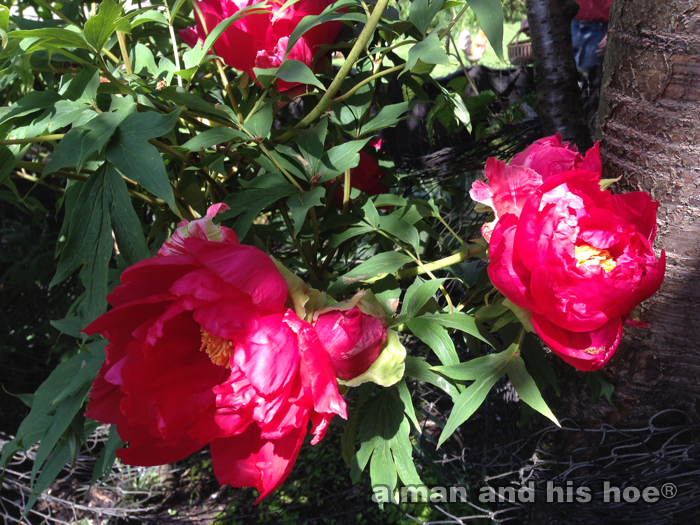
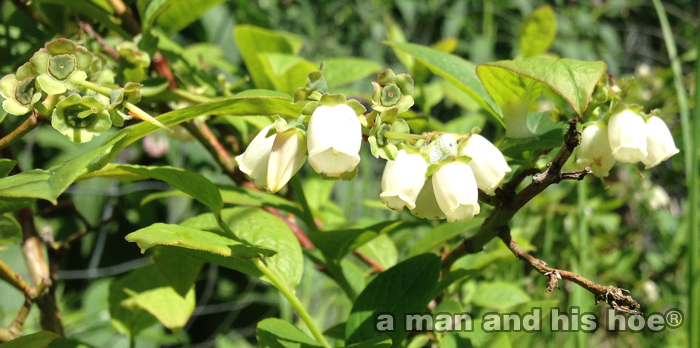
This year, the blueberries are loaded with flowers. Weeding, hoeing, and digging quickly draws a gang of chickens eager to help. I didn’t even realize Lucky was trying to tell me something until I looked at the photos I had taken.
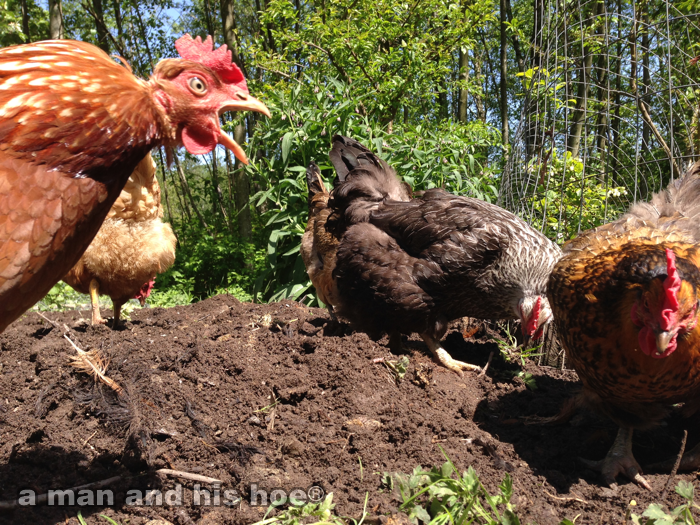
Billy stands guard, making sure the hens are safe.

The hens do a thorough job stirring up the dirt. They are after earthworms and bugs, but do a great job aerating the top few inches of soil. They will destroy anything you’ve planted, so they are of no help when you are trying to seed a vegetable bed.
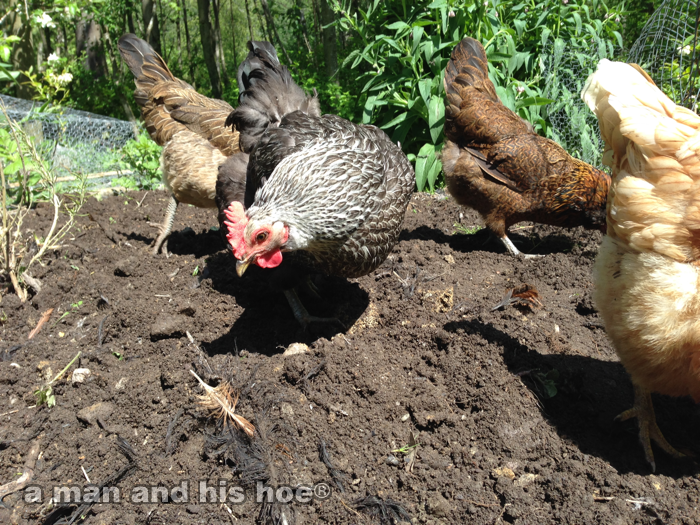
It’s impossible to be bored when there are chickens and chicks around. Spending fifteen minutes with a hen and her chicks beats following Twitter feeds or looking at Facebook.
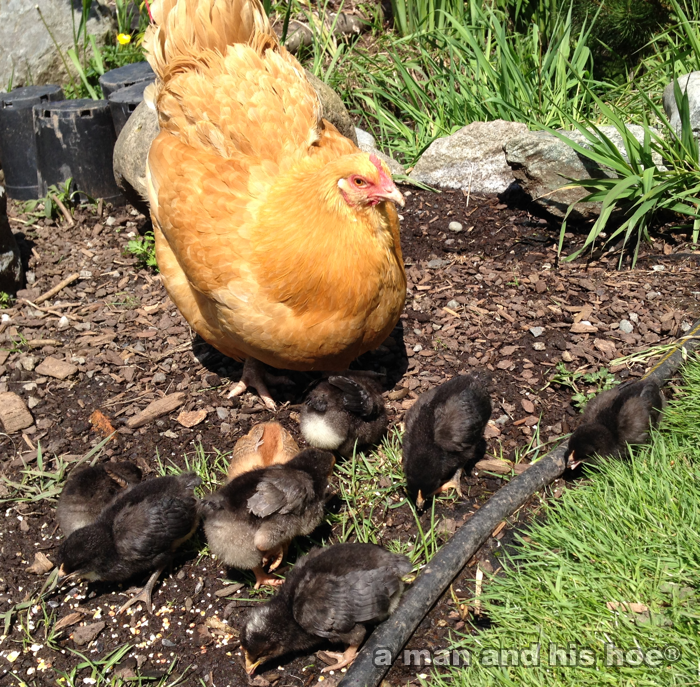
Month: May 2014
-
Chickens in the Blueberry Patch
-
Bees
[wpvideo 0Pboe7t9]
All it takes is a little sunshine and the bees are out in force. There are thousands of wild bees here. On sunny days, the rosemary, mint, oregano, lavender and other herbs are buzzing with them.There are 200 species of bees in this area, some 4,000 species in North America, and nearly 20,000 species of bees worldwide.
According to Lisa Arkin, director for Beyond Toxic, “Without bees we would lose a third of the food that comes to our tables every day.”
If you look closely, you can see one of the mother hens in the background.
A Diversity of Bees Is Good for Farming—And Farmers’ Wallets ~ Smithsonian
-
Clouds Don’t Obscure Beauty
Cloudy weather can’t obscure beauty. The ground is wet, very wet. Puddles are everywhere. And so is verdant green. The vine maples are in bloom, their red and yellow flowers flutter like butterflies.
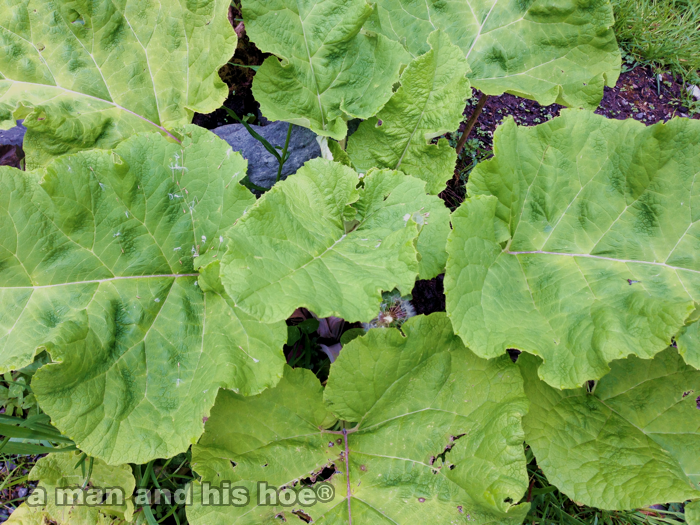
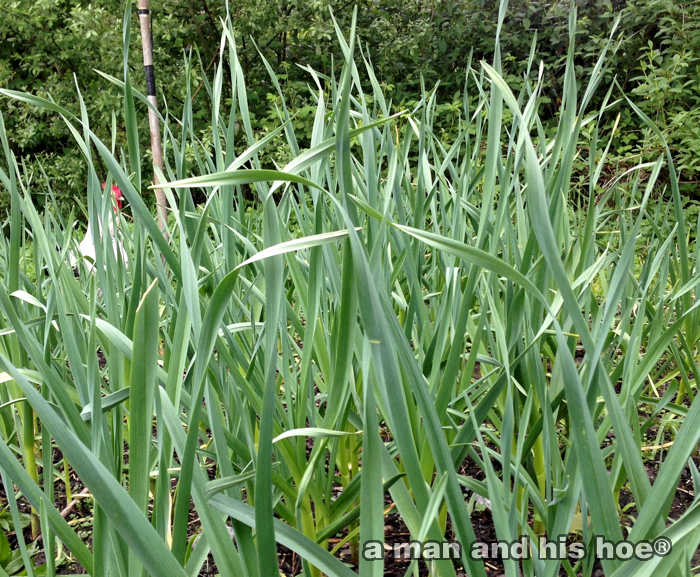





-
First Day of Summer
For parts of the world, today is the first day of summer. After torrential rains this morning, the sun came out this afternoon. The sky can be so blue here. I feel sorry for those living where the skies are polluted much of the time.
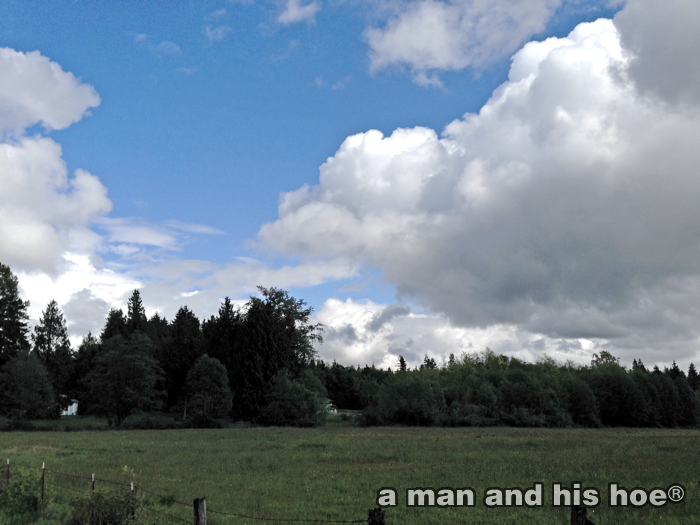
Water is pouring off the hill. The drainage ditch alongside of the road down to the post office, is a cascade of muddy water.
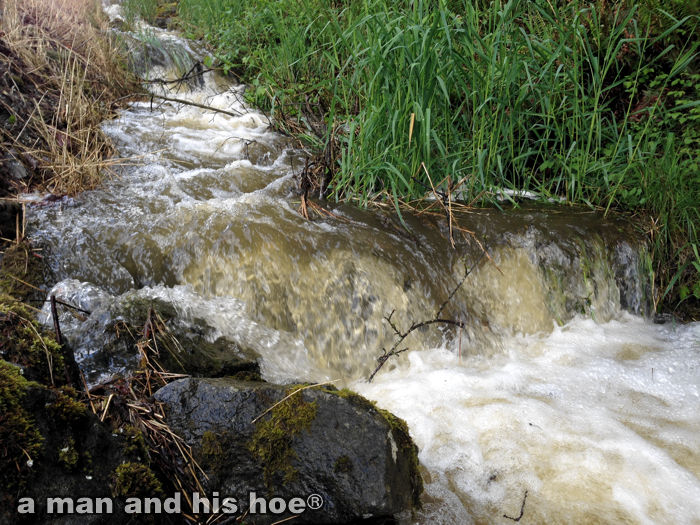
I’ve been by this barbed wire fence hundreds of time, but didn’t notice until today that when they strung the fence, they left loops of barbed wire. The wire is rusted so it was left a long time ago. What happened? Was it just left there in case repairs were ever needed in the fence? Did the person stringing the fence forget it? Was it their contribution to rural art?
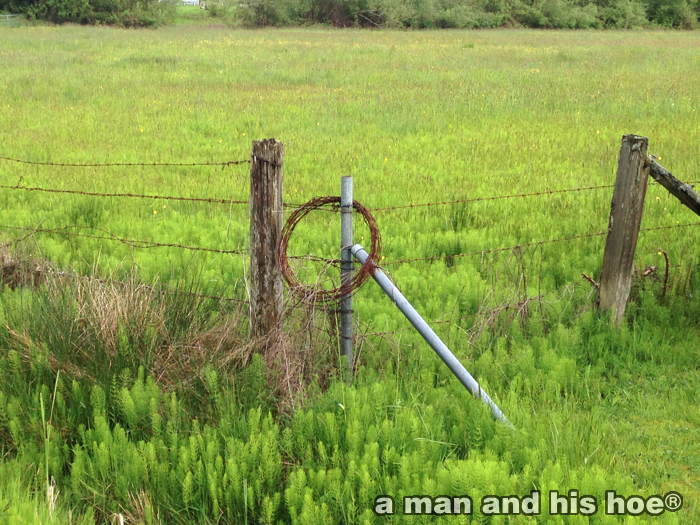
-
Rikka
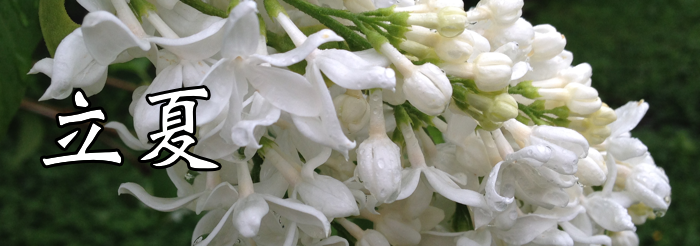
According to the traditional Japanese calendar, May 5 is the start of summer this year. The traditional Japanese calendar, based on the Chinese lunisolar calendar, divides the year into 24 solar terms, which mark each 15 degree movement the earth makes around the sun. The term which just passed, April 20 through May 4 this year, was 穀雨 – Kokuu, which translates to “rains which help the grain grow”. It marks the time when the rains arrive to make the grain grow.The six terms of summer are:
- 立夏 – rikka, the start of summer 5/5~5/20
- 小満 – syoman, small fullness: the time when everything is growing well 5/21~6/5
- 芒種 – bousyu, heads of grain: the time when the heads of grain are forming 6/6~6/20
- 夏至 – geshi, summer solstice 6/21~7/6
- 小暑 – syosyo, little heat: the time when it gets hot 7/7~7/22
- 大暑 – taisyo, great heat: the hottest time of the year 7/23~8/6
Not a great deal of warmth to mark the start of summer here. The rains which helped the grain grow won’t stop falling.
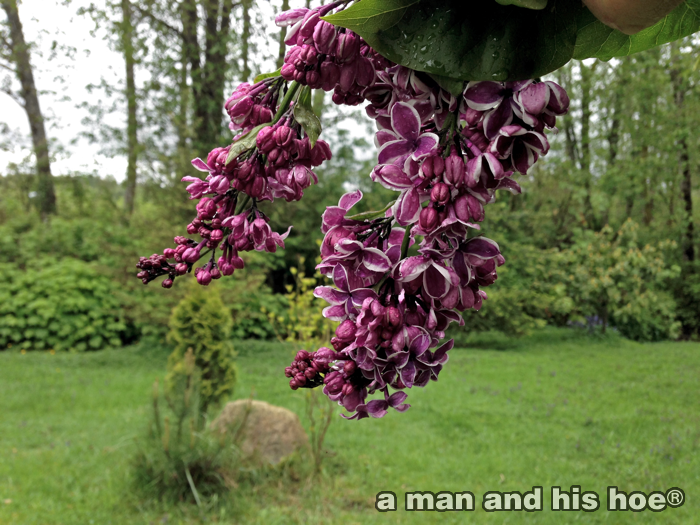
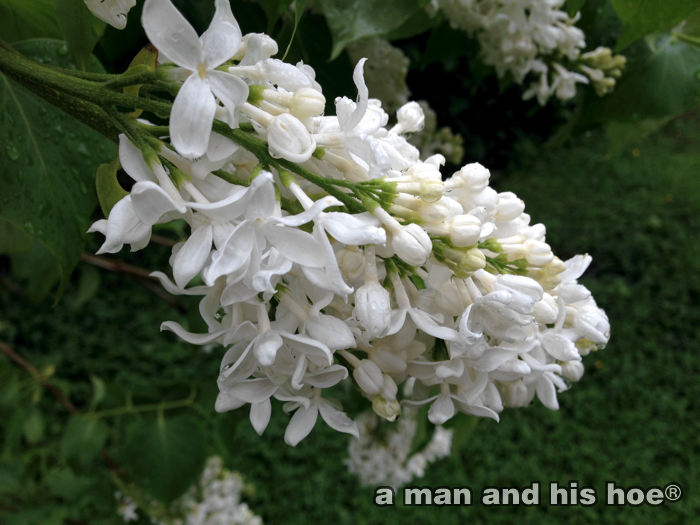
The mother hens are as busy as ever.
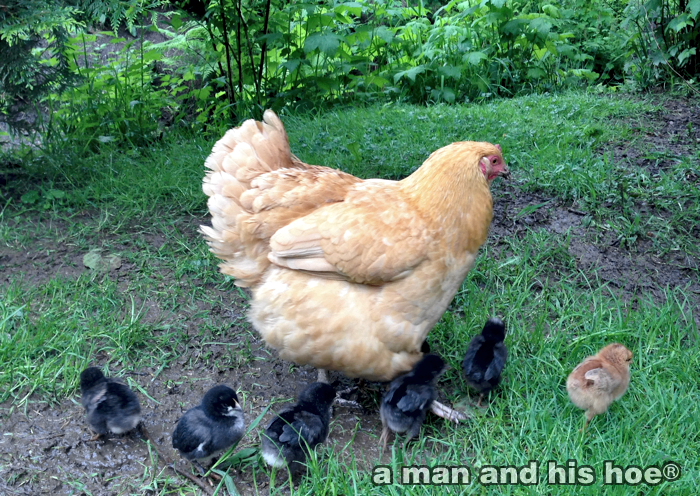
And there is always more planting to do. Looking at a bed of freshly planted soil, it’s hard to believe that in a short time, there will be nothing but vigorous green growth here.
